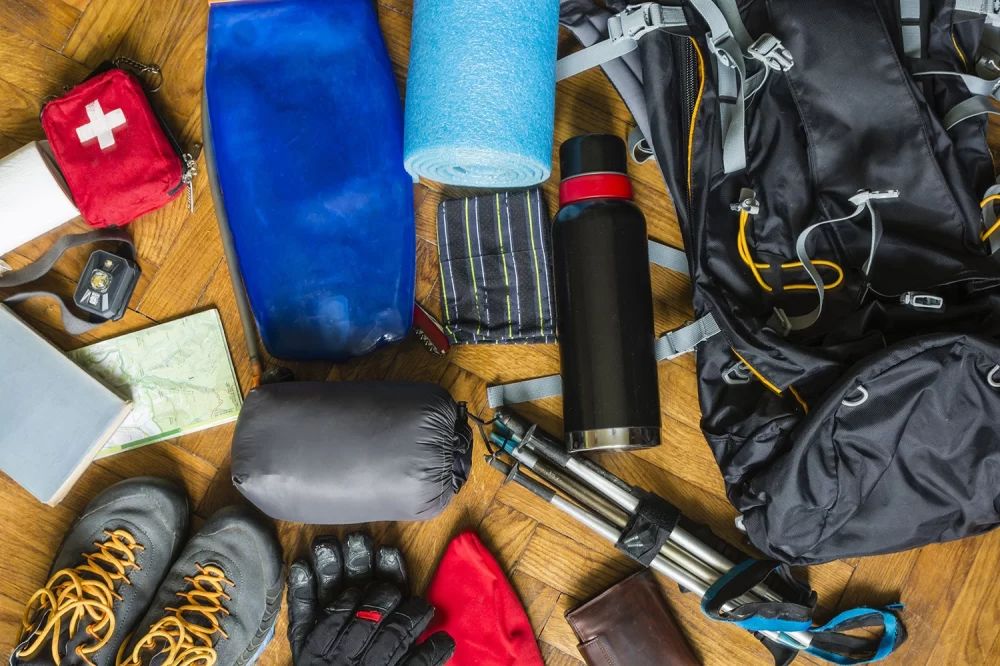How I Mastered Camping Gear Storage for Stress-Free Adventures
Camping has always been a big part of my life. Ever since I was a kid tagging along with my parents through the pine-covered trails of the Pacific Northwest, I knew the thrill of outdoor adventure. But if there's one lesson I’ve learned through years of setting up tents in the rain and digging through messy gear bins in the dark—it’s this: staying organized with your camping gear can make or break your trip.
1. The Turning Point: Why I Got Serious About Gear Storage
A few years ago, I took my family on a spontaneous weekend camping trip to Pine Cliff Resort in Michigan. It was meant to be a relaxing escape. Instead, it turned into a chaotic mess of missing tent stakes, tangled ropes, and soggy sleeping bags because I had packed everything in a rush. That was the last straw. After that trip, I vowed to never let disorganization ruin another adventure.
2. Creating a Gear Inventory System That Actually Works
The first thing I did was set up a full inventory of my camping equipment. I used a spreadsheet to list every item I owned—from headlamps and propane stoves to carabiners and can openers. I included columns for condition, location, and date last used.
Now before every trip, I run down that list. It helps me check what needs replacing, restocking, or repair. Trust me, there’s no worse feeling than arriving at your site and realizing you forgot your tent poles. Yes, that’s happened to me too.
My Pro Tip:
Color-code your gear categories. I use green labels for kitchen items, blue for sleeping gear, red for emergency tools, and so on. It saves me hours of digging through boxes.
3. Choosing the Right Storage Containers for Long-Term Success
I used to just toss everything into whatever bin was nearby. But organizing camping gear is more than just "putting it in a box." I now use clear, stackable, weather-resistant bins with locking lids. They allow me to see what’s inside at a glance and keep things dry and rodent-free during off-season storage in the garage.
Each bin is labeled with a bold, waterproof marker and organized by function: “Camp Kitchen,” “Tents & Shelter,” “Lighting & Power,” “Cold Weather Gear,” and “First Aid & Emergency.”
4. Dedicated Camping Gear Zone: Turning My Garage Into a Mini Base Camp
If you camp often, dedicate a specific area in your garage or basement just for gear. I set up metal shelves and hung pegboards where I can hang lanterns, folding chairs, and even backpacks. My tents are stored loosely (not tightly packed!) in breathable bags to avoid mildew, and sleeping bags are hung or rolled up in oversized cotton sacks.
Smart Storage Ideas:
- Use over-the-door shoe organizers to hold small gear like lighters, bug spray, and utensils.
- Install a ceiling rack for kayaks or bulky items like coolers and air mattresses.
- Mount hooks for backpacks and hydration packs to keep them aired out and ready to go.
5. Packing Strategy for Each Trip: Customizing Based on Season and Destination
Every trip is different. What you need for a summer weekend at Pine Cliff Resort is very different from a fall hike through the Smoky Mountains. I always pack based on three factors: destination, duration, and weather forecast.
I lay everything out before packing it, group by activity (cooking, sleeping, hiking, hygiene), then use dry bags or compression sacks for things like clothes and sleeping gear. I even keep a “last-minute checklist” taped inside my gear bin for items I can’t pack until just before leaving—like perishables or prescription meds.
6. Post-Trip Rituals That Keep Gear Fresh and Ready
After every trip, I spend one afternoon cleaning, drying, and re-storing all my gear. Yes, it's a pain after a long drive back home, but future me always thanks present me for it.
I dry tents fully before repacking, clean off my stove and dishes, shake out sleeping bags, and update my inventory list with any items that were damaged or consumed. This habit has saved me countless headaches and cash.
7. Why Staying Organized Makes Camping More Fun
I used to dread packing and unpacking. Now, it’s part of the adventure. Being organized lets me focus on what really matters—watching my kids roast marshmallows, hiking at sunrise, and falling asleep to the sound of crickets instead of worrying about lost gear or leaky coolers.
If you’re serious about camping, take your storage system seriously too. It’s not just about being neat. It’s about peace of mind, safety, and getting the most out of every outdoor experience. Whether you're planning your first camping trip or you're a seasoned pro looking for better systems, start with a plan, build good habits, and enjoy the wild with confidence.
Looking for the perfect place to test out your well-organized gear? Check out Pine Cliff Resort—your home base for unforgettable camping adventures!







